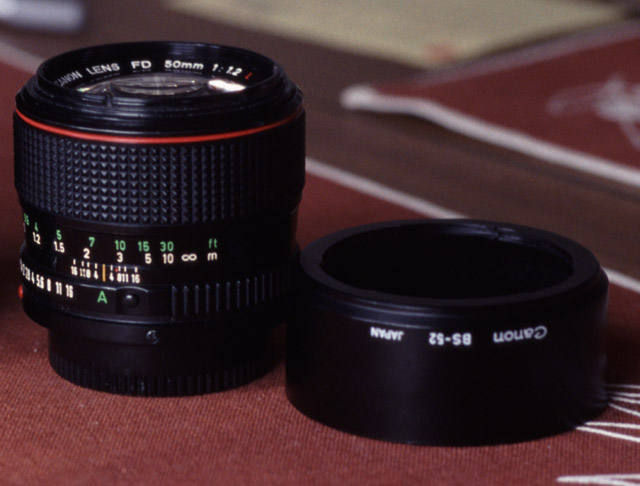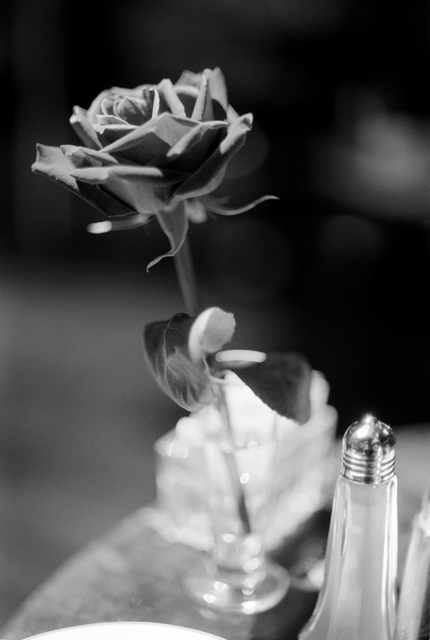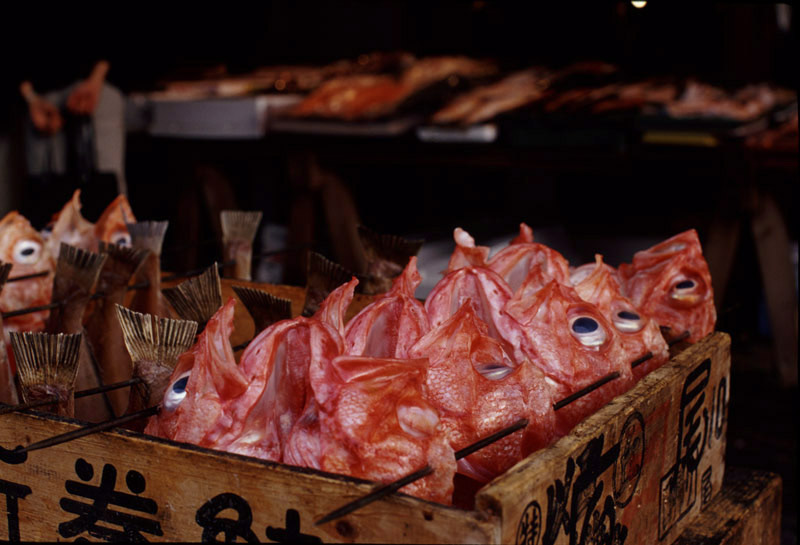The Canon 50mm New FD 50mm f/1.2L

Canon was one of the pioneers of the so-called "super-speed" lenses. In the sixties and seventies, quality films were still fairly slow speed, so super fast lenses served a very tangible purpose. To shoot a 100, 64, or even 25 ISO film in anything but the brightest light requires lenses that dip below f/2. Canon made several of these ultra fast lenses for the FD system, and even a f/0.95 lens for their rangefinder system. The most successful lens of the early period was the reknowned 55m f/1.2 SSC lens, which was heralded as the best standard lens in the world at the time (1971). Veteran lens tester Erwin Puts holds that it outperforms the Leica Noctilux by a good margin and manages 154 lpm at the center even while wide open. http://www.imx.nl/photosite/japan/CanonFD/FD50.html
In layman's terms, this means it was very, very detailed in the center of the frame even when wide open. The Canon new FD 50mm f/1.2L is the descendent of the 55mm f/1.2 SSC. How does it differ? I have not used the 55mm version, nor seen a direct comparison, so I cannot comment on performance, but there are obvious differences. First of all, the New FD lens is significantly smaller and lighter. The new FD 50mm 1.2 is somewhat of an enigma in the world of super-speed lenses in that it is actually not much larger or heavier than slower lenses of the same focal length. The filter ring is only 52mm, and the lens weighs a mere 380 grams (the 55mm version weighed almost double at 605 grams). Nevertheless, compared to slower lenses of the same focal length, super-speed lenses usually have a lot of glass. In order to collect as much light as possible, the front elements are very large, making them susceptible to flare (when stray light strikes the front element and causes reflections. Looking through a dirty windshield with the sun directly in front of you is a similar problem). Essentially, the faster the lens becomes, the more difficult it is to correct the problems that every lens has. The problems required creative solutions such as new types of glass (fluorite, and even radioactive thorium was used in some lenses), aspherical elements that deflected flare and only allowed on-axis light, and floating lens elements -- where one part of the lens would move separately from the rest of the glass in the lens to achieve better performance at close focusing distances. The New FD 50mm f/1.2L was a tour-de-force, which incorporated all of these solutions. To give an example of how advanced these lenses were, Leica has only decided to incorporate aspherical and floating elements in their 50mm summilux lens this year, while Canon did it in 1971.
The Canon New FD 50mm f/1.2L is one of the best lenses I have ever used. It does not have the amazing snap that the Leica 50mm f/2 Summicron lens has, but overall it has excellent performance. The color rendition is very accurate, and it performs very well even at full aperture.


